When you wire two things in parallel you force their voltage to be the same; when you wire two things in series you force their current to be the same.
Each power source outputs a different amount of current depending on the voltage, or a different voltage depending on the current, depending which way you choose to look at it.
For each power source you can draw an I/V curve that shows the relationship between current (I) and voltage (V). The current and voltage will be somewhere on this line. Here's an I/V curve for some random solar panel (source):

Depending how you hook it up you could get 2.7 amps and 0 volts (short circuit), or 2.7 amps and 10 volts, or 2.5 amps and 17 volts, or 0.5 amps and 20.5 volts, or 0 amps and 21.2 volts (open circuit), or so on.
The marked point is the point where you get the most power. Looks like about 2.5 amps, 17 volts in this particular case. Since getting power is the whole purpose of having a solar panel, you'd rather keep it at this point as much as possible. You could use a 6.8 ohm resistor (if your goal was to heat up a resistor). Realistically you either use an MPPT converter which automatically finds and holds the maximum power point (hence the name, Maximum Power Point Tracking), or the other usual thing to do is you attach it to, say, a 12 volt battery and you just accept that you won't get the maximum possible efficiency, but you also don't need to pay for an MPPT converter.
This chart is just the electrical properties. I didn't even talk about the amount of sunlight. You get a completely different line depending on the amount of sunlight:

If you connect two solar panels directly together in parallel, you force the same voltage. That's not a bad bet, for solar panels of the same type. You can see that the maximum power point is about the same voltage, no matter the amount of sunlight. If you connect them in series you force the same current, and this is bad because the weakest panel limits the current. It's still something that people do - in fact it's necessary, since a single solar cell only makes 0.6 volts - they wire a bunch in series to make a panel. You just have to be aware that if something is blocking the sunlight onto one panel or cell, it hamstrings the entire series chain. The point is, when connecting together several of the same type of solar panel, you don't lose much power because the max power points are close together.
Now I don't know about wind turbines, but I imagine they have something similar. And I imagine that wind turbine I/V curves are completely different from solar panel I/V curves. I found a set here (not legally copyable). Unlike the solar panel, the MPP voltage changes a lot depending on the turbine speed and so does the MPP current.
That means if you force the same current or the same voltage, one or the other or both are going to be quite far away from their maximum power point. Maybe you can design a system where both are at their MPP in good sun and wind, but what when the wind slows down or it gets cloudy? They won't stay balanced. Not like two solar panels that stay balanced because they get cloudy or sunny at the same time because it's the same sky.
Therefore it's a good idea to give each power source its own MPPT converter which can keep that one producing its maximum power. Sometimes you even see solar power designs with separate converters for different groups of solar panels.



